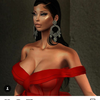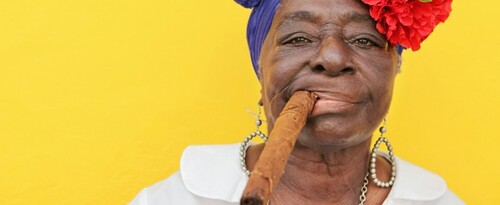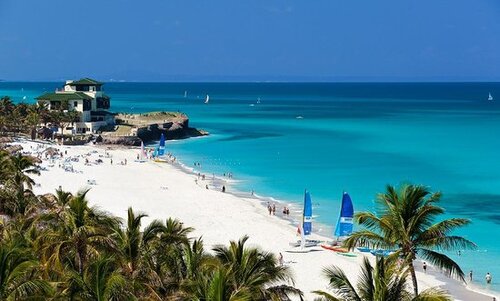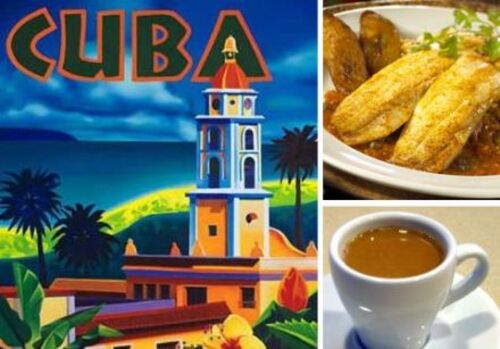-
Par mayerlin76 le 2 Mai 2016 à 23:10
Tony Tarantino Officially Endorsing Donald J. Trump as the Next President of the United States - Tony Tarantino met with Donald J. Trump when he was his VIP Guest last Thursday in Costa Mesa CA
Tony TARANTINO Supporting Donald Trump For President as the next President of the United States and looking forward to collaborating with Donald J. Trump and hisoffice in the support for all the Fallen & Disabled Law Enforcement & Border Patrol Officers that we have across our great nation
Donald J. Trump Donald Trump For President Donald Trump Jr. Donald Trump, The Political Movement Wake UP, America American Police Beat Blue Lives Matter Breitbart NYPD Ivanka Trump Melania Trump National Border Patrol Council National Association of Police Organizations (NAPO) National Law Enforcement Officers Memorial Fund National Sheriffs' Association National Support Of Law Enforcement Day FBI – Federal Bureau of Investigation United States Marshals Service Detroit Police Lieutenants & Sergeants Association United States Border Patrol Alaska State Troopers (Official) California Highway Patrol LAPD Headquarters Maricopa County Sheriff's OfficeThe Hollywood Reporter Variety Hollywood Life The Hollywood Reporter Bobbie Padgett Judge Jeanine Pirro Jack Waggon Jay Leno The Steve Wilkos Show Good Morning America NBC News Ali Vitali Christopher Atkins Americans for Trump 2016 PoliceOne.com Law Enforcement Today Under the Shield Foundation The Thin Blue Line Thin Blue Line Mark Byron Lane Captain Clay Higgins Tony Beall Clint Eastwood Clint Eastwood Backs DonaldTrump - President Conan O'Brien Presents: Team Coco Judge Judy Los Angeles County Sheriff's Department Sheriff Joe Arpaio Judge Andrew Napolitano Nanette Estrada On-Air with Ryan Seacrest Ryan Seacrest Nancy Grace Comedian Gil Fajardo Sue Wong Ewart Chin Jack Waggon Jeff Hansen Chris Quinn Stefanie Powers David Harrison Levi Emilio Rivera Emilio Rivera – avec Lurleen Hilliard.
TRADUCTION
Tony Tarantino Approuvant Officiellement Donald J. Trump comme le prochain président des États-Unis - Tony Tarantino a rencontré Donald J. Trump quand il était son invité VIP jeudi dernier à Costa Mesa CA
Soutenir Donald Trump pour le président comme le prochain président des États-Unis et nous avons hâte de collaborer avec Donald J. Trump et son bureau dans le support pour tous les agents de patrouille et handicapés application de la loi et frontaliers Fallen que nous avons dans notre grande nation.
Donald J. Trump Donald Trump For President Donald Trump Jr. Donald Trump, The Political Movement Wake UP, America American Police Beat Blue Lives Matter Breitbart NYPD Ivanka Trump Melania Trump National Border Patrol Council National Association of Police Organizations (NAPO) National Law Enforcement Officers Memorial Fund National Sheriffs' Association National Support Of Law Enforcement Day FBI – Federal Bureau of Investigation United States Marshals Service Detroit Police Lieutenants & Sergeants Association United States Border Patrol Alaska State Troopers (Official) California Highway Patrol LAPD Headquarters Maricopa County Sheriff's OfficeThe Hollywood Reporter Variety Hollywood Life The Hollywood Reporter Bobbie Padgett Judge Jeanine Pirro Jack Waggon Jay Leno The Steve Wilkos Show Good Morning America NBC News Ali Vitali Christopher Atkins Americans for Trump 2016 PoliceOne.com Law Enforcement Today Under the Shield Foundation The Thin Blue Line Thin Blue Line Mark Byron Lane Captain Clay Higgins Tony Beall Clint Eastwood Clint Eastwood Backs DonaldTrump - President Conan O'Brien Presents: Team Coco Judge Judy Los Angeles County Sheriff's Department Sheriff Joe Arpaio Judge Andrew Napolitano Nanette Estrada On-Air with Ryan Seacrest Ryan Seacrest Nancy Grace Comedian Gil Fajardo Sue Wong Ewart Chin Jack Waggon Jeff Hansen Chris Quinn Stefanie Powers David Harrison Levi Emilio Rivera Emilio Rivera – avec Lurleen Hilliard. votre commentaire
votre commentaire
-
-
Par mayerlin76 le 25 Avril 2016 à 21:52
Cuba, officially the Republic of Cuba (Spanish: República de Cuba (help·info)), is a sovereign state comprising the island of Cuba as well as Isla de la Juventud and several minor archipelagos. Cuba is located in the northern Caribbean at the confluence of the Caribbean Sea, the Gulf of Mexico and the Atlantic Ocean. It is south of Florida and the Bahamas, west of Haiti and north of Jamaica. Havana is the largest city and capital; other major cities include Santiago de Cuba and Camagüey. Cuba is the largest island in the Caribbean, with an area of 109,884 square kilometres (42,426 sq mi), and the second-most populous after Hispaniola, with over 11 million inhabitants.
Prior to Spanish colonization in the late 15th century, Cuba was inhabited by Amerindian tribes. It remained a colony of Spain until the Spanish–American War of 1898, which led to nominal independence as a de facto United States protectorate in 1902. As a fragile republic, Cuba attempted to strengthen its democratic system, but mounting political radicalization and social strife culminated in the dictatorship of Fulgencio Batista in 1952. Further unrest and instability led to Batista's ousting in January 1959 by the July 26 Movement, which afterwards established a government under the leadership of Fidel Castro. Since 1965, the country has been governed by the Communist Party of Cuba. A pawn during the Cold War between the Soviet Union and the United States, a nuclear war nearly broke out during the Cuban Missile Crisis of 1962.
Culturally, Cuba is considered part of Latin America. It is a multiethnic country whose people, culture and customs derive from diverse origins, including the aboriginal Taíno and Ciboney peoples, the long period of Spanish colonialism, the introduction of African slaves, and a close relationship with the Soviet Union in the Cold War.
Cuba is a Marxist–Leninist one-party republic, where the role of the Communist Party is enshrined in the Constitution. Independent observers have accused the Cuban government of numerous human rights abuses, including arbitrary imprisonment and torture.Cuba is a developing country with a planned economy that is dominated by the exports of sugar, tobacco, coffee and skilled labour. It ranks highly in some metrics of national performance, including health care and education
The name Cuba comes from the Taíno language. The exact meaning of the name is unclear but it may be translated either as 'where fertile land is abundant' (cubao),[20] or 'great place' (coabana). Authors who believe that Christopher Columbus was Portuguese state that Cuba was named by Columbus for the town of Cuba in the district of Beja in Portugal.
TRANSLATE
Cuba, oficialmente la República de Cuba (español: República de Cuba (? · I)), es un estado soberano que comprende la isla de Cuba, así como la Isla de la Juventud y varios archipiélagos menores. Cuba se encuentra en el norte del Caribe, en la confluencia del Mar Caribe, el Golfo de México y el Océano Atlántico. Se encuentra al sur de la Florida y las Bahamas, al oeste de Haití y al norte de Jamaica. La Habana es la ciudad más grande y capital; otras ciudades importantes son Santiago de Cuba y Camagüey. Cuba es la isla más grande del Caribe, con una superficie de 109,884 kilómetros cuadrados (42.426 millas cuadradas), y el segundo más poblado después de la Española, con más de 11 millones de habitantes.
Antes de la colonización española en el siglo 15, Cuba estaba habitada por tribus amerindias. Se mantuvo una colonia de España hasta la Guerra Española-Americana de 1898, que condujo a la independencia nominal como de facto protectorado de Estados Unidos en 1902. Como una república frágil, Cuba trató de reforzar su sistema democrático, pero el montaje radicalización política y conflictos sociales culminó con la dictadura de Fulgencio Batista en 1952. Además inquietud e inestabilidad provocado derrocamiento de Batista en enero de 1959 por el Movimiento 26 de Julio, que después se estableció un gobierno bajo el liderazgo de Fidel Castro. Desde 1965, el país ha sido gobernado por el Partido Comunista de Cuba. Un peón durante la Guerra Fría entre la Unión Soviética y los Estados Unidos, una guerra nuclear casi estalló durante la Crisis de los Misiles de 1962.
Culturalmente, Cuba se considera parte de América Latina. Es un país multiétnico cuyo pueblo, la cultura y las costumbres derivar de diversos orígenes, incluyendo la gente aborigen Taíno y Ciboney, el largo periodo del colonialismo español, la introducción de esclavos africanos, y una estrecha relación con la Unión Soviética en la Guerra Fría.
Cuba es una república marxista-leninista de partido único, donde el papel del Partido Comunista está consagrado en la Constitución. Los observadores independientes han acusado al gobierno cubano de numerosas violaciones de los derechos humanos, incluida la prisión arbitraria y torture.Cuba es un país en desarrollo con una economía planificada que está dominado por las exportaciones de azúcar, tabaco, café y mano de obra especializada. Que ocupa un lugar destacado en algunas métricas de rendimiento nacional, incluida la salud y la educación
El nombre de Cuba proviene de la lengua taína. El significado exacto del nombre no está clara, pero puede ser traducida como "donde la tierra fértil es abundante '(cubao), [20] o" gran lugar "(coabana). Los autores que creen que Cristóbal Colón era portugués estado que Cuba fue nombrado por Colón para el pueblo de Cuba, en el distrito de Beja en Portugal.Before the arrival of the Spanish, Cuba was inhabited by three distinct tribes of American Indian people. The Taíno (an Arawak people), the Guanajatabey, and the Ciboney people.
The ancestors of the Ciboney migrated from the mainland of South America, with the earliest sites dated to 5,000 BP.
The Taíno arrived from Hispanola sometime in the 3rd century A.D. When Columbus arrived they were the dominant culture in Cuba, having an estimated population of 150,000.
The name "Cuba" comes from the native Taíno language. It is derived from either coabana meaning "great place," or from cubao meaning "where fertile land is abundant".The Taíno were farmers, while the Ciboney were farmers as well as fishers and hunter-gatherers.
Spanish colonization and rule (1492–1898)
Main article: Captaincy General of CubaAfter first landing on an island then called Guanahani, Bahamas on October 12, 1492,Christopher Columbus commanded his three ships: La Pinta, La Niña and the Santa María, to land on Cuba's northeastern coast on October 28, 1492.(This was near what is now Bariay, Holguin province.) Columbus claimed the island for the new Kingdom of Spain and named it Isla Juana after Juan, Prince of Asturias.
In 1511, the first Spanish settlement was founded by Diego Velázquez de Cuéllar at Baracoa. Other towns soon followed, including San Cristobal de la Habana, founded in 1515, which later became the capital. The native Taíno were forced to work under the encomienda system, which resembled a feudal system in Medieval Europe. Within a century the indigenous people were virtually wiped out due to multiple factors, primarily Eurasian infectious diseases, to which they had no natural resistance (immunity), aggravated by harsh conditions of the repressive colonial subjugation. In 1529, a measles outbreak in Cuba killed two-thirds of those few natives who had previously survived smallpox.
On May 18, 1539, Conquistador Hernando De Soto departed from Havana, Cuba at the head of some 600 followers into a vast expedition through the Southeastern United States, starting at La Florida, in search of gold, treasure, fame and power.On September 1, 1548, Dr. Gonzalo Perez de Angulo was appointed governor of Cuba. He arrived in Santiago, Cuba on November 4, 1549 and immediately declared the liberty of all natives.He became Cuba's first permanent governor to reside in Havana instead of Santiago, and he built Havana's first church made of masonry After the French took Havana in 1555, the governor's son, Francisco de Angulo, went to Mexico.Cuba developed slowly and, unlike the plantation islands of the Caribbean, had a diversified agriculture. But what was most important was that the colony developed as an urbanized society that primarily supported the Spanish colonial empire. By the mid-18th century, its colonists held 50,000 slaves, compared to 60,000 in Barbados; 300,000 in Virginia, both British colonies; and 450,000 in French Saint-Domingue, which had large-scale sugar cane plantations.
TRANSLATE
Antes de la llegada de los españoles, Cuba estaba habitada por tres tribus distintas de los indios norteamericanos. El taína (un pueblo arawak), el guanajatabey, y la gente Ciboney.
Los antepasados de los Ciboney emigraron desde el continente de América del Sur, con los primeros sitios que datan de 5.000 BP.
Los taínos de La Española llegó en algún momento en el 3er siglo dC Cuando llegó Colón eran la cultura dominante en Cuba, que tiene una población estimada de 150.000.
El nombre de "Cuba" proviene de la lengua taína nativa. Se deriva de cualquiera coabana significado "gran lugar", o desde cubao que significa "donde la tierra fértil es abundante" .El taínos eran agricultores, mientras que el Ciboney eran agricultores, así como pescadores y cazadores-recolectores.
la colonización española y el Estado (1492-1898)
Artículo principal: Capitanía General de Cuba
Después del primer aterrizaje en una isla entonces llamada Guanahani, Bahamas el 12 de octubre de 1492, Cristóbal Colón mandó a sus tres naves: La Pinta, La Niña y la Santa María, a la tierra en la costa noreste de Cuba el 28 de octubre de 1492. (Este estaba cerca lo que hoy es la provincia de Bariay, Holguín.) Colón reclamó la isla para el nuevo Reino de España y la llamó isla Juana después de que Juan, Príncipe de Asturias.
En 1511, el primer asentamiento español fue fundada por Diego Velázquez de Cuéllar en Baracoa. Otros pueblos pronto siguieron, incluyendo San Cristóbal de La Habana, fundada en 1515, que más tarde se convirtió en la capital. Los taínos nativos se vieron obligados a trabajar bajo el sistema de encomienda, que se parecía a un sistema feudal en la Europa medieval. Dentro de un siglo los indígenas fueron prácticamente eliminados debido a múltiples factores, principalmente las enfermedades infecciosas euroasiáticas, a los que no tenían resistencia natural (inmunidad), agravado por las duras condiciones de la subyugación colonial represivo. En 1529, un brote de sarampión en Cuba mató a dos tercios de los pocos nativos que habían sobrevivido a la viruela anteriormente.
El 18 de mayo de 1539 Conquistador Hernando De Soto partió de La Habana, Cuba al frente de unos 600 seguidores en una gran expedición a través del sureste de Estados Unidos, a partir de La Florida, en busca de oro, tesoro, la fama y Power-On septiembre 1, 1548, el Dr. Gonzalo Pérez de Angulo fue nombrado gobernador de Cuba. Llegó a Santiago de Cuba el 4 de noviembre, 1549 y de inmediato declaró la libertad de todos natives.He se convirtió en el primer gobernador permanente de Cuba para residir en La Habana en lugar de Santiago, y construyó la primera iglesia de La Habana de mampostería Después de los franceses tomaron La Habana en 1555 , el hijo del gobernador, Francisco de Angulo, fue a Mexico.Cuba desarrolló lentamente y, a diferencia de las islas plantación del Caribe, tenía una agricultura diversificada. Pero lo más importante fue que la colonia se desarrolló como una sociedad urbanizada que apoyaba principalmente del imperio colonial español. Por la mitad del siglo 18, los colonos llevaron a cabo 50.000 esclavos, en comparación con 60.000 en Barbados; 300.000 en Virginia, ambas colonias británicas; y 450.000 en francés Saint-Domingue, que tenía plantaciones de caña de azúcar a gran escala.The Seven Years' War, which erupted in 1754 across three continents, eventually arrived in the Spanish Caribbean. Spain's alliance with the French pitched them into direct conflict with the British, and in 1762 a British expedition of five warships and 4,000 troops set out from Portsmouth to capture Cuba. The British arrived on June 6, and by August had Havana under siege. When Havana surrendered, the admiral of the British fleet, George Keppel, the 3rd Earl of Albemarle, entered the city as a conquering new governor and took control of the whole western part of the island. The British immediately opened up trade with their North American and Caribbean colonies, causing a rapid transformation of Cuban society. They imported food, horses and other goods into the city, as well as thousands of slaves from West Africa to work on the under developed sugar plantations.4
Though Havana, which had become the third-largest city in the Americas, was to enter an era of sustained development and increasing ties with North America during this period, the British occupation of the city proved short-lived. Pressure from London sugar merchants, fearing a decline in sugar prices, forced negotiations with the Spanish over colonial territories. Less than a year after Britain seized Havana, it signed the Peace of Paris together with France and Spain, ending the Seven Years' War. The treaty gave Britain Florida in exchange for Cuba. The French had recommended this to Spain, advising that declining to give up Florida could result in Spain instead losing Mexico and much of the South American mainland to the British. Many in Britain were disappointed, believing that Florida was a poor return for Cuba and Britain's other gains in the war.
TRANSLATE
La Guerra de los Siete Años, que entró en erupción en 1754 a través de tres continentes, con el tiempo llegó en el Caribe español. La alianza de España con los franceses les lanzó en conflicto directo con los británicos, y en 1762 una expedición británica de cinco buques de guerra y 4.000 soldados partió de Portsmouth para capturar Cuba. Los británicos llegaron el 6 de junio, y en agosto tenido Habana en estado de sitio. Cuando Habana rindió, el almirante de la flota británica, George Keppel, el 3er Conde de Albemarle, entró en la ciudad como un nuevo gobernador venciendo, y tomó el control de toda la parte occidental de la isla. Los británicos inmediatamente se abrió el comercio con sus colonias de América del Norte y el Caribe, causando una rápida transformación de la sociedad cubana. Ellos importan alimentos, caballos y otras mercancías en la ciudad, así como miles de esclavos de África Occidental para trabajar en el subdesarrollado plantaciones.4 azúcar
Aunque La Habana, que se había convertido en la tercera ciudad más grande en las Américas, fue entrar en una era de desarrollo sostenido y crecientes vínculos con América del Norte durante este periodo, la ocupación británica de la ciudad duró poco. La presión de los comerciantes de azúcar de Londres, por temor a un descenso en los precios del azúcar, las negociaciones con el español sobre los territorios coloniales forzado. Menos de un año después que Gran Bretaña se apoderó de La Habana, se firmó la Paz de París junto con Francia y España, poniendo fin a la Guerra de los Siete Años. El tratado otorgó a Gran Bretaña la Florida a cambio de Cuba. El francés había recomendado a España, que aconseja que se negó a renunciar a la Florida podría resultar en España en lugar de perder México y gran parte del continente sudamericano a los británicos. Muchos en Gran Bretaña estaban decepcionados, creyendo que Florida era una vuelta pobre para Cuba y de Gran Bretaña otros aumentos en la guerra.The real engine for the growth of Cuba's commerce in the late eighteenth and early nineteenth century was the Haitian Revolution. When the enslaved peoples of what had been the Caribbean's richest colony freed themselves through violent revolt, Cuban planters perceived the region's changing circumstances with both a sense of fear and opportunity. They were afraid because of the prospect that slaves might revolt in Cuba, too, and numerous prohibitions during the 1790s on the sale of slaves in Cuba that had previously been slaves in French colonies underscored this anxiety. The planters saw opportunity, however, because they thought that they could exploit the situation by transforming Cuba into the slave society and sugar-producing "pearl of the Antilles" that Haiti had been before the revolution.As the historian Ada Ferrer has written, "At a basic level, liberation in Saint-Domingue helped entrench its denial in Cuba. As slavery and colonialism collapsed in the French colony, the Spanish island underwent transformations that were almost the mirror image of Haiti's." Estimates suggest that between 1790 and 1820 some 325,000 Africans were imported to Cuba as slaves, which was four times the amount that had arrived between 1760 and 1790.
TRANSLATE
El verdadero motor para el crecimiento del comercio de Cuba a finales del siglo XVIII y principios del siglo XIX fue la revolución de Haití. Cuando los pueblos esclavizados de lo que había sido colonia más rica del Caribe se liberaron a través violenta revuelta, los plantadores cubanos perciben las circunstancias cambiantes de la región tanto con una sensación de miedo y oportunidad. Tenían miedo debido a la perspectiva de que los esclavos podrían rebelarse en Cuba, también, y numerosas prohibiciones durante la década de 1790 sobre la venta de esclavos en Cuba, que previamente había sido esclavos en las colonias francesas de relieve esta ansiedad. Los plantadores veían oportunidad, sin embargo, porque pensaban que podían aprovechar la situación mediante la transformación de Cuba en la sociedad de esclavos y la productora de azúcar "perla de las Antillas" que Haití había sido antes de la revolution.As el historiador Ada Ferrer ha escrito, " en un nivel básico, la liberación en Saint-Domingue ayudó a afianzar su negación en Cuba. Como la esclavitud y el colonialismo se derrumbó en la colonia francesa, la isla española experimentó transformaciones que eran casi la imagen especular de la de Haití ". Las estimaciones indican que entre 1790 y 1820 unos 325.000 africanos fueron importados a Cuba como esclavos, que era cuatro veces la cantidad que se había llegado entre 1760 y 1790.
Although a smaller proportion of the population of Cuba was enslaved, at times slaves arose in revolt. In 1812 the Aponte Slave Rebellion took place but it was suppressed.
The population of Cuba in 1817 was 630,980, of which 291,021 were white, 115,691 free people of color (mixed-race), and 224,268 black slaves. This was a much higher proportion of free blacks to slaves than in Virginia, for instance, or the other Caribbean islands. Historians such as Swedish Magnus Mõrner, who studied slavery in Latin America, found that manumissions increased when slave economies were in decline, as in 18th-century Cuba and early 19th-century Maryland of the United States.In part due to Cuban slaves working primarily in urbanized settings, by the 19th century, there had developed the practice of coartacion, or "buying oneself out of slavery," a "uniquely Cuban development," according to historian Herbert S. Klein Due to a shortage of white labor, blacks dominated urban industries "to such an extent that when whites in large numbers came to Cuba in the middle of the nineteenth century, they were unable to displace Negro workers" A system of diversified agriculture, with small farms and fewer slaves, served to supply the cities with produce and other goods.
In the 1820s, when the rest of Spain's empire in Latin America rebelled and formed independent states, Cuba remained loyal. Its economy was based on serving the empire. By 1860, Cuba had 213,167 free people of color, 39% of its non-White population of 550,000. By contrast, Virginia with about the same number of blacks, had only 58,042 or 11% who were free; the rest were enslaved. In the antebellum years, Virginia discouraged manumissions after the Nat Turner's Slave Rebellion of 1831 and strengthened restrictions against free blacks, as did other southern states. In addition, there was a high demand for slaves, and Virginia planters sold many in the internal domestic slave trade, to be shipped or taken overland to the Deep South, which had greatly expanded its cotton production.
Independence movements
Full independence from Spain was the goal of a rebellion in 1868 led by planter Carlos Manuel de Céspedes. De Céspedes, a sugar planter, freed his slaves to fight with him for a free Cuba. On December 27, 1868, he issued a decree condemning slavery in theory but accepting it in practice and declaring free any slaves whose masters present them for military service. The 1868 rebellion resulted in a prolonged conflict known as the Ten Years' War. Two thousand Cuban Chinese joined the rebels. Chinese had been imported as indentured laborers. A monument in Havana honours the Cuban Chinese who fell in the war.
The United States declined to recognize the new Cuban government, although many European and Latin American nations did so. In 1878, the Pact of Zanjón ended the conflict, with Spain promising greater autonomy to Cuba. In 1879–1880, Cuban patriot Calixto García attempted to start another war known as the Little War but did not receive enough support. Slavery in Cuba was abolished in 1875 and was completed in 1886.
TRANSLATE
Aunque una proporción menor de la población de Cuba fue esclavizado, a veces eslava surgió en la revuelta. En el 1812 Slave Rebellion Aponte eu lieu le meta fue suprimida.
La población de Cuba en 1817 era 630.980, 291.021 de qui eran blancos, 115.691 personas libres de color (mestizos), y 224.268 esclavos negros. Esta fue una proporción mucho mayor de los negros libres a eslava que en Virginia, por ejemplo, el oro Opiniones de las otras islas del Caribe. Historiadores como el sueco Magnus Morner, que Estudió a la esclavitud en América Latina, encontraron que el aumento de las manumisiones de esclavos Cuando las economías están en declive, como en Cuba del siglo 18 y Maryland de la cuota de Estados States.In de principios del siglo 19 debido a la cubana eslava de Trabajo principalmente en los entornos urbanizados, por el siglo 19, se había desarrollado la práctica de la coartación, o "la compra de uno mismo de la esclavitud", un "desarrollo única cubana," selon historiador Herbert S. Klein Debido a la escasez de mano de obra blanca, los negros dominó industrias urbanas "a Tal punto que cuando los blancos en los números de ancho de leva para Cuba en el medio del siglo XIX, no fueron capaces de desplazar a los trabajadores negros" un sistema de agricultura diversificada, con pequeñas granjas y eslava Menos, sirve para abastecer a las ciudades producir y con demás mercancías.
En la década de 1820, cuando el resto del imperio de España en América Latina se rebelaron y formaron estados independientes, Cuba se mantuvo leal. Su economía se basa estaba sirviendo al imperio. En 1860, Cuba había 213.167 personas libres de color, el 39% de las TIC población no blanca de 550.000. Por el contrario, Virginia con Sami sobre el número de negros, tenía sólo 58.042 o el 11% que son libres; El resto fueron esclavizados. En los años anteriores a la guerra, Virginia desalentado manumisiones pareja después de la Nat Turner Esclavo Rebelión de 1831 y las restricciones reforzadas contre negros libres, al igual que los estados del sur demás. Además, había una gran demanda de esclavos, y los plantadores de Virginia Muchos se venden en el comercio interior esclava doméstica, para ser enviado o llevado por tierra hasta el sur profundo, qui HAD TIC ampliado en gran medida la producción de algodón.
Los movimientos de independencia
La independencia total de España ha sido el objetivo de una rebelión en 1868 dirigido por planta de Carlos Manuel de Céspedes. De Céspedes, una fábrica de azúcar, liberó a los esclavos para luchar con su _him_ por una Cuba libre. El 27 de diciembre 1868 Publicado tiene decreto que condena la esclavitud en la portería teoría Aceptando que en la práctica y libre de declarar Cualquier quién eslava maestros presentes em para el servicio militar. La rebelión de 1868 dio lugar a un conflicto prolongado Conocida como la Guerra de los Diez Años. Dos mil chinos cubanos se unieron a los rebeldes. China había sido importado como trabajadores contratados. Un monumento honores en La Habana los chinos cubanos caídos en la guerra.
Estados Unidos se redujo a reconocer al nuevo gobierno cubano, aunque muchos países de Europa y América Latina lo hizo. En 1878 el Pacto de Zanjón puso fin al conflicto, con España prometiendo mayor autonomía a Cuba. En 1879-1880, patriota cubano Calixto García intentó iniciar otra guerra críticas conocido como Guerrita el gol no recibe suficiente apoyo. La esclavitud fue abolida en Cuba en 1875 y se terminó en 1886.An exiled dissident named José Martí founded the Cuban Revolutionary Party in New York in 1892. The aim of the party was to achieve Cuban independence from Spain. In January 1895 Martí traveled to Montecristi and Santo Domingo to join the efforts of Máximo Gómez. Martí recorded his political views in the Manifesto of Montecristi. Fighting against the Spanish army began in Cuba on February 24, 1895, but Martí was unable to reach Cuba until April 11, 1895. Martí was killed in the battle of Dos Rios on May 19, 1895. His death immortalized him as Cuba's national hero.
Around 200,000 Spanish troops outnumbered the much smaller rebel army, which relied mostly on guerrilla and sabotage tactics. The Spaniards began a campaign of suppression. General Valeriano Weyler, military governor of Cuba, herded the rural population into what he called reconcentrados, described by international observers as "fortified towns". These are often considered the prototype for 20th-century concentration camps. Between 200,000 and 400,000 Cuban civilians died from starvation and disease in the camps, numbers verified by the Red Cross and United States Senator Redfield Proctor, a former Secretary of War. American and European protests against Spanish conduct on the island followed.
The U.S. battleship Maine was sent to protect U.S. interests, but soon after arrival, she exploded in Havana harbor and sank quickly, killing nearly three quarters of her crew. The cause and responsibility for her sinking remained unclear after a board of inquiry. Popular opinion in the U.S., fueled by an active press, concluded that the Spanish were to blame and demanded action. Spain and the United States declared war on each other in late April 1898.
Over the decades, five U.S. presidents—Polk, Pierce, Buchanan, Grant, and McKinley—had tried to buy the island of Cuba from Spain.
Revolution and Communist party rule (1959–present)
to continued : https://en.wikipedia.org/wiki/Cuba
TRANSLATE
Un disidente exiliado llamado José Martí fundó el Partido Revolucionario Cubano en Nueva York en 1892. El objetivo del partido era lograr la independencia de Cuba de España. En enero de 1895 Martí viajó a Montecristi y Santo Domingo para unirse a los esfuerzos de Máximo Gómez. Martí grabó sus puntos de vista políticos en el Manifiesto de Montecristi. Luchando contra el ejército español comenzó en Cuba el 24 de febrero de 1895, pero Martí no pudo llegar a Cuba hasta el 11 de abril de 1895. Martí murió en la batalla de Dos Ríos el 19 de mayo de 1895. Su muerte lo inmortalizó como el héroe nacional de Cuba .
Alrededor de 200.000 tropas españolas superaron el ejército rebelde mucho más pequeño, que dependía principalmente de la guerrilla y sabotaje tácticas. Los españoles comenzaron una campaña de represión. El general Valeriano Weyler, gobernador militar de Cuba, conducidos a la población rural en lo que llamó reconcentrados, descrito por observadores internacionales como "plazas fuertes". Estos son a menudo considerados el prototipo de los campos de concentración del siglo 20. Entre 200.000 y 400.000 civiles cubanos murieron de hambre y enfermedades en los campos, los números verificados por la Cruz Roja y el senador de Estados Unidos Redfield Proctor, ex Secretario de Guerra. protestas de América y Europa contra la conducta española en la isla siguieron.
Los EE.UU. acorazado Maine fue enviado para proteger los intereses de Estados Unidos, pero poco después de su llegada, ella explotó en el puerto de La Habana y se hundió rápidamente, matando a casi tres cuartas partes de su tripulación. La causa y la responsabilidad de su hundimiento sigue siendo poco clara después de una junta de investigación. La opinión popular en los EE.UU., alimentada por una prensa activa, llegó a la conclusión de que los españoles tenían la culpa y exigió acción. España y los Estados Unidos declararon la guerra a la otra a finales de abril 1898.
Durante décadas, cinco presidentes Polk, Pierce, Buchanan, Grant, y US-McKinley habían tratado de comprar la isla de Cuba de España.
Revolución y el gobierno del partido comunista (1959-presente)
a continuación: https://en.wikipedia.org/wiki/CubaCUBA
PLATS DE CUBA
 votre commentaire
votre commentaire
MAYERLIN PEOPLE , NEWS DE STARS,PHOTOS, MUSICS,CONCERTS
 Twitter
Twitter del.icio.us
del.icio.us Facebook
Facebook Digg
Digg Technorati
Technorati Yahoo!
Yahoo! Stumbleupon
Stumbleupon Google
Google Blogmarks
Blogmarks Ask
Ask Slashdot
Slashdot

















































